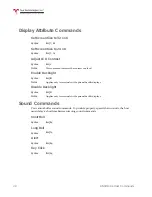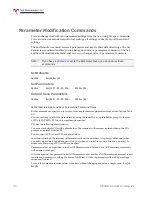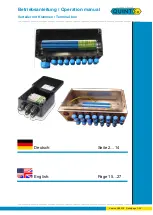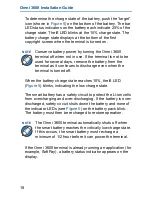
Key Programming
26
Extended Key Functionality
Extended Key commands are special hex codes that you use while defining key output to
control the transmission and display of characters on both the terminal side and host side.
For example, sending the string “START” to the host, while displaying “RUNNING” on the
terminal. Extended Key commands fall into the following categories:
•
Break Commands
•
Output Control Commands
•
Pause Commands
•
Branching Commands
•
Handshake-Out Line Manipulation Commands
Note:
Before attempting to program keys with extended functionality, you must enable the
Break Command parameter by using either the
Break Commands
When a communication line is idle, the normal state of the terminal, the line is
marking
or
transmitting continuous series of ones. The marking signal is a voltage between -3 and -30
VDC. Break commands place the transmit line into a condition known as
spacing
, where the
terminal is sending zeroes for a specified time (either 250 ms or 3.5 seconds). The spacing
signal is a voltage b3 and +30 VDC.
Short Break
When defining key output, enter
BB
as the two HEX digits to specify a break of 250 ms.
Long Break
When defining key output, enter
BC
as the two HEX digits to specify a break of 3.5 seconds
















































